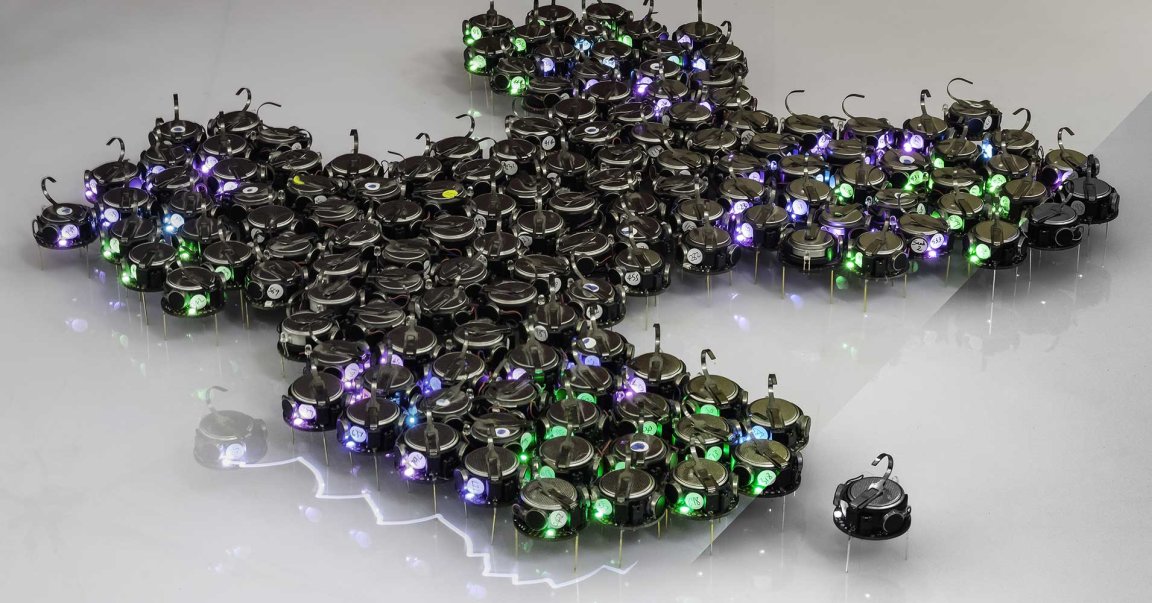
Hivemind
A new network of autonomous swarm robots can work together to form various structures and shapes, all without receiving any big-picture instructions or design blueprints.
Communicating locally like the cells in your body, the robots automatically concentrate in different places. The bots cluster and branch in different directions based on signals they sent to one another, according to research published Wednesday in the journal Science Robotics. The researchers hope the work could lead to networks of robots that build bridges or other structures to help with disaster relief efforts.

Biological Inspiration
This new research from the European Molecular Biology Laboratory in Barcelona is the latest development in an organization called Swarm Organ’s ongoing goal to create robots that act like biological cells and structures.
Just like cells communicate by releasing chemicals and detecting those released by their neighbors, the individual robots give off a short-range, infrared signal that only reaches about 10 centimeters.
Specifically, the robots broadcast a signal that tells other bots how much of a simulated substance called “morphogen” they contain. Morphogen is meant to be the virtual version of a biological signaling molecule — it’s not a physical particle but rather each robot’s code contains a different value for the amount of morphogen assigned to that bot.
In experiments where the swarm was set loose, each individual robot was instructed only to seek out a so-called “Turing spot,” which the researchers defined as an area of high morphogen concentration, so bots with greater amounts of morphogen served as hubs towards which the others migrated.
Mother Nature Knows Best
The robots created some interesting shapes and structures. But there were also plenty of brand-new bugs — the physical robots in this new research sometimes messed up in ways that previous experiments, all based on computer simulations, did not. Sometimes, the researchers saw individual bots careen away from the cluster, perhaps in search of the great morphogen cluster in the sky.
This project is still in its early stages, but the researchers hope to someday develop a swarm of robots that can create three-dimensional structures just like biological cells form into tissues and organs or how colonies of ants can work together to create bridges and rafts.
READ MORE: James Sharpe on the Swarm Organ project and futuristic technologies – video [The Guardian]
More on swarm robotics: A Swarm of Autonomous Robots is Heading to an Ocean Near You